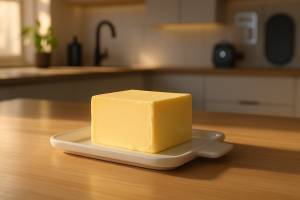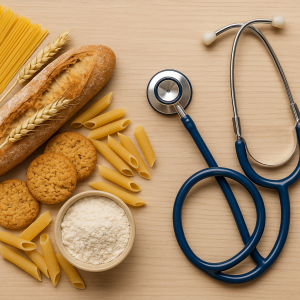 Nitrates and nitrites, present naturally or added as food additives, are strongly suspected of being harmful to health. Being aware of them can help you identify them and limit their consumption.
Nitrates and nitrites, present naturally or added as food additives, are strongly suspected of being harmful to health. Being aware of them can help you identify them and limit their consumption.
With the coming of summer, sausages, ham and other cured meats are all the rage when it comes to aperitifs. But that doesn’t mean they’re safe. In fact, these products contain added nitrates or nitrites, which are potentially dangerous to health. To illustrate, in France in 2021, a parliamentary report called on the food industry to phase out these nitrites, more commonly known as E 249 (potassium nitrite), E 250 (sodium nitrite), E 251 (sodium nitrate) and E 252 (potassium nitrate), from all cooked meats by 2025.
However, two years on, the government’s plan does not include a general ban on nitrite,” regrets Emmanuel Ricard, commissioner for prevention and promotion of screening at the Ligue contre le cancer. This is despite the Anses report on the risks associated with nitrites in cooked meats and the regular warnings of the Ligue contre le cancer and associations such as Foodwatch and Yuka calling for a total ban on nitrites in cooked meats. The situation is even more worrying given that nitrates and nitrites are already naturally present in many foods.”
Article continued below
Naturally or artificially, nitrates and nitrites are present in our environment
“Some vegetables are particularly rich in nitrates, such as radishes, beets, lamb’s lettuce, celery and turnips, with even higher concentrations in leafy vegetables (spinach, lettuce, chard, chard, etc.). Francelyne Marano, professor emerita of cell biology and toxicology at the University of Paris and chair of the steering committee on cancer and the environment of the Ligue contre le Cancer, warns.
The degradation of water resources (intensive livestock farming, use of chemical fertilisers, etc.) also increases the presence of nitrates in tap water. “In many communities, particularly in Brittany, an area heavily influenced by agriculture, the regulatory limit of 50 mg/L of nitrate in water is often exceeded,” the researcher points out.
Among the products regularly implicated is, of course, ham. But this overlooks the fact that added nitrites are also present in other industrial products, conventional or organic, such as sausages, canned meat, traditional dishes, foie gras, certain cheeses and even baby food.
Substances that give ham its pink colour
E 249, E 250, E 251 and E 252 are additives traditionally used in the charcuterie industry to preserve foodstuffs, ensuring their good resistance during production and their medium-term preservation,” explains Emmanuel Ricard. Health authorities continue to stress the benefits of nitrites in protecting against bacteria dangerous to humans, such as listeria and salmonella, and in avoiding the risk of botulism. It turns out that the development of the cold chain has now made these risks almost negligible. But if nitrites and nitrates continue to be used, it is also because they serve another purpose: they give the ham its lovely pink caramel colour, a slightly moist appearance and certain visual, taste and olfactory properties.
These are selling points that food manufacturers are finding it difficult to abandon, despite the suspicions of danger that scientists have been denouncing since the 1970s and which have now been confirmed.
Nitrates and nitrites promote cancer and type 2 diabetes
Once consumed, nitrates and nitrites form highly carcinogenic products known as nitrosamines. The analysis of just over 400 epidemiological studies has allowed the World Cancer Research Fund (WCRF) to conclude that the consumption of deli meats increases the risk of colorectal cancer with a convincing level of evidence,” observes Francelyne Marano. With a less convincing level of evidence, consumption of processed meats is also associated with an increased risk of cancer of the nasopharynx, oesophagus, lung, ovaries and pancreas.” In addition, certain methods of cooking or preparing meat products, starting with barbecue, also release molecules that can promote the development of cancers.
Published in 2023, results from the NutriNet-Santé cohort study showed that higher exposure to nitrites (either from food additives or natural sources) increases the risk of type 2 diabetes.
Restriction of the consumption of sausages
“If all sources of nitrite and nitrate in food are taken into account, safety levels are likely to be exceeded in all age groups,” insists Francelyne Marano. It is therefore up to each of us to adopt good practices to try to limit our daily intake of nitrate and nitrite.”
It is important to read labels carefully. However, it is not always easy to identify the additive in question (E 249, E 250, E 251 and E 252), because the words ‘nitrite-free’ or the fact that a product has received the organic label does not always guarantee that it does not contain nitrates or nitrites. Anses advises not to exceed 150 grams of cold cuts per week, which is about 3 slices of ham, and to prefer white ham.
Several brands are now trying to meet consumer expectations by offering products without added nitrites, which therefore have a shorter shelf life. Sausages are cooked in vegetable broths and vegetable extracts. However, these are not real alternatives as they contain nitrates which are converted into nitrites during cooking. Moreover, the absence of nitrites is often compensated for by the use of large quantities of salt, which is also harmful to health (risk of high blood pressure).
Changing your buying habits
Sausage lovers should be aware that a natural ham is usually pale, even greyish in colour,” says Dr Ricard. They should not hesitate to find out about the production process from caterers and pork butchers, who are increasingly producing more and more nitrite-free sausages themselves and selling them on the markets.
Anses recommends diversifying your consumption of vegetables, but also being careful about where they come from in order to avoid nitrate levels that are sometimes even higher.
Tap water, which is largely controlled, is not a vector for very high nitrate consumption. If in doubt, you can get accurate water quality data from the Department of Health and Prevention or contact your local council to find out about the latest water health checks in your area. However, mineral water, which is highly recommended by paediatricians for use by infants, can be used to further reduce nitrate levels, with labelling to ensure that consumers can be confident about the content.
Vitamin C is the queen of antioxidants. It helps to limit the formation of nitrosamines in the body. Mangoes, lychees, tomatoes, kiwis, strawberries… There are plenty to satisfy every taste craving. Beware though, vitamin C will not work wonders if you eat a lot of deli meats.
What’s the difference between nitrites and nitrates?
Nitrates and nitrites are ions that occur naturally in the environment. They are formed as a result of the oxidation of nitrogen by micro-organisms found in plants, soil or water. Most of the nitrates we consume come from our food, whether natural nitrates (water, vegetables, etc.) or artificial nitrates (food additives). Nitrates are not toxic in themselves,” says Francelyne Marano, professor emerita of cell biology and toxicology at the University of Paris and chair of the steering committee on cancer and the environment of the Ligue contre le Cancer. But the danger comes from their conversion to nitrite when they come into contact with micro-organisms in the digestive tract during the ingestion process.






